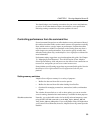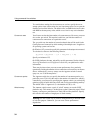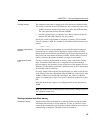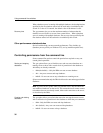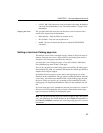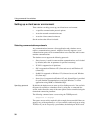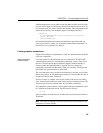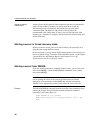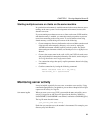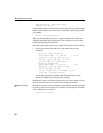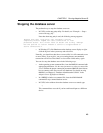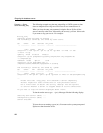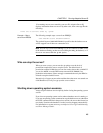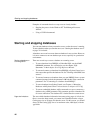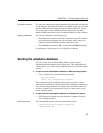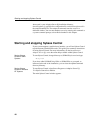
CHAPTER 2 Running Adaptive Server IQ
41
Starting multiple servers or clients on the same machine
In a production environment, it would be unusual to have more than one server
running on the same system. In a development environment, however, this
situation can occur.
If you are running more than one server or client on the same UNIX machine,
and shared memory is enabled, you must take certain precautions to prevent
users from connecting to the wrong server. To avoid conflicts when using
shared memory, consider doing one or more of the following:
• Create a temporary directory dedicated to each server. Make sure that each
client uses the same temporary directory as its server by setting the
ASTMP environment variable explicitly on both systems. For details
about setting environment variables, see the Adaptive Server IQ Reference
Manual.
• Create a data source name in the .odbc.ini file (on UNIX) for each server
and provide detailed connection information. For details, see the Adaptive
Server IQ Installation and Configuration Guide.
• Use connection strings that specify explicit parameters instead of relying
on defaults.
• Confirm connections by issuing the following command:
SELECT "database name is" = db_name(),
"servername_is" = @@servername
Monitoring server activity
It may be helpful, especially for new users, to monitor server activity. Using
commands appropriate for your platform, you can direct Adaptive Server IQ to
capture server activity in a log file.
Unix server log file
When you start a server on a UNIX system with the start_asiq utility, server
activity is logged in an ASCII text file placed in the directory defined by
$ASLOGDIR. (If $ASLOGDIR is not defined, it defaults to $ASDIR/logfiles.)
The log file name has this format:
your_server_name.###.srvlog
Each time you start the server, the number is incremented. For example, your
directory may look like this:



